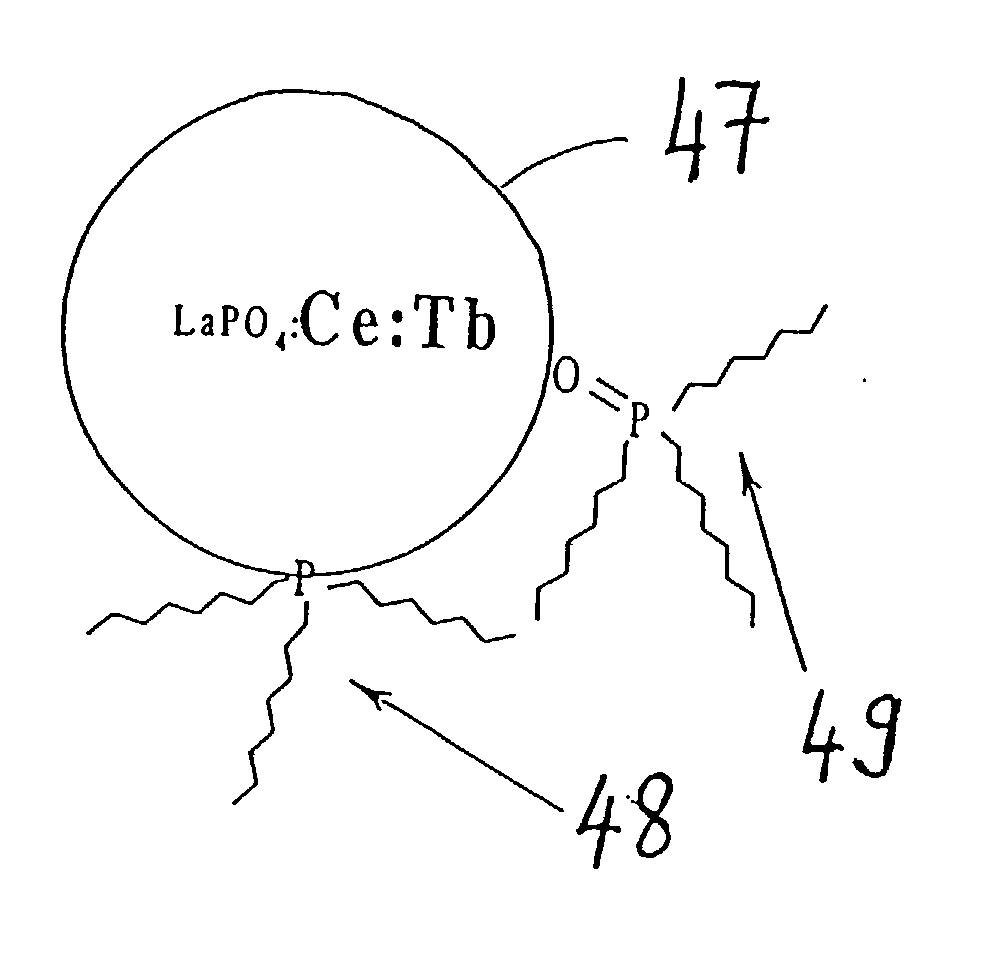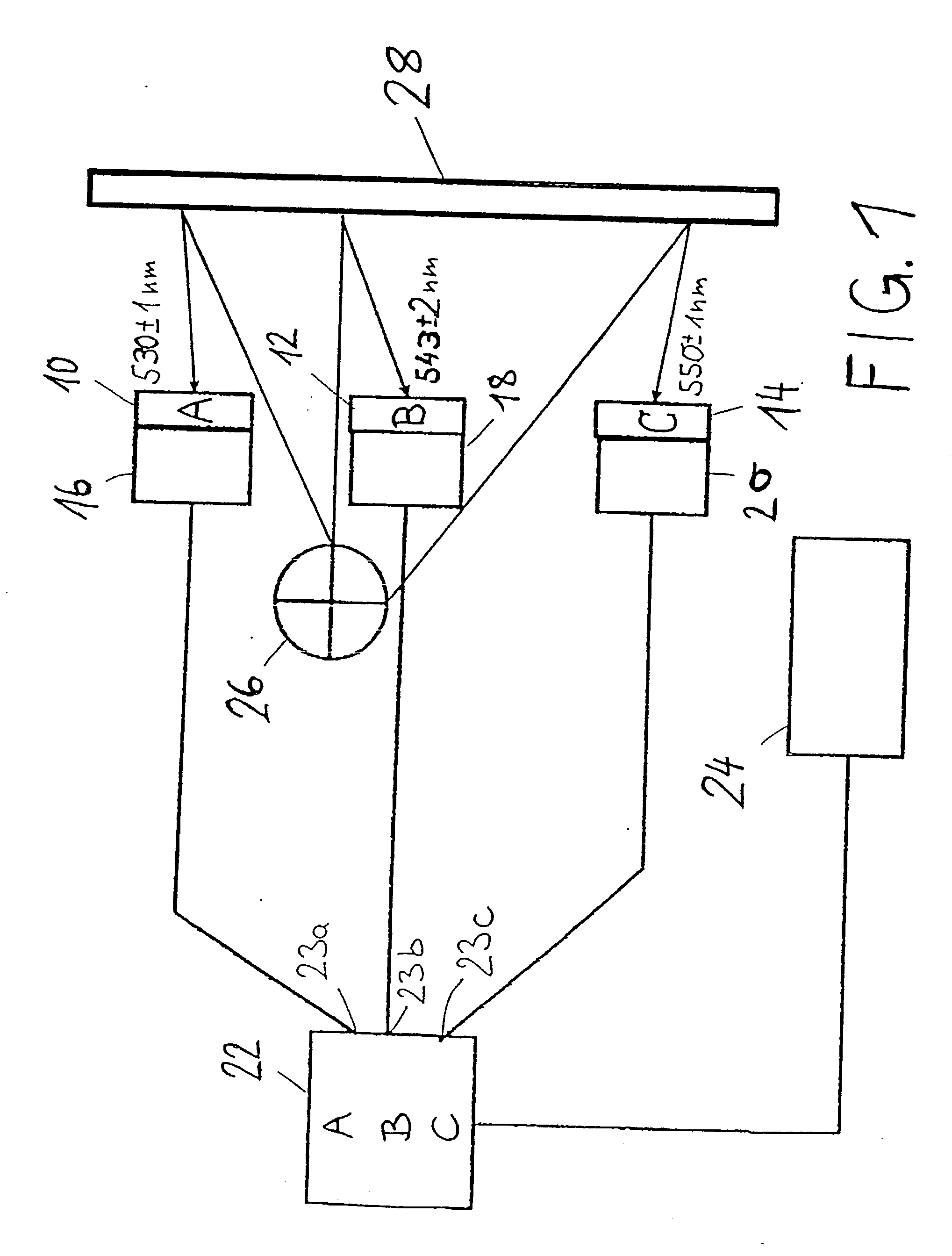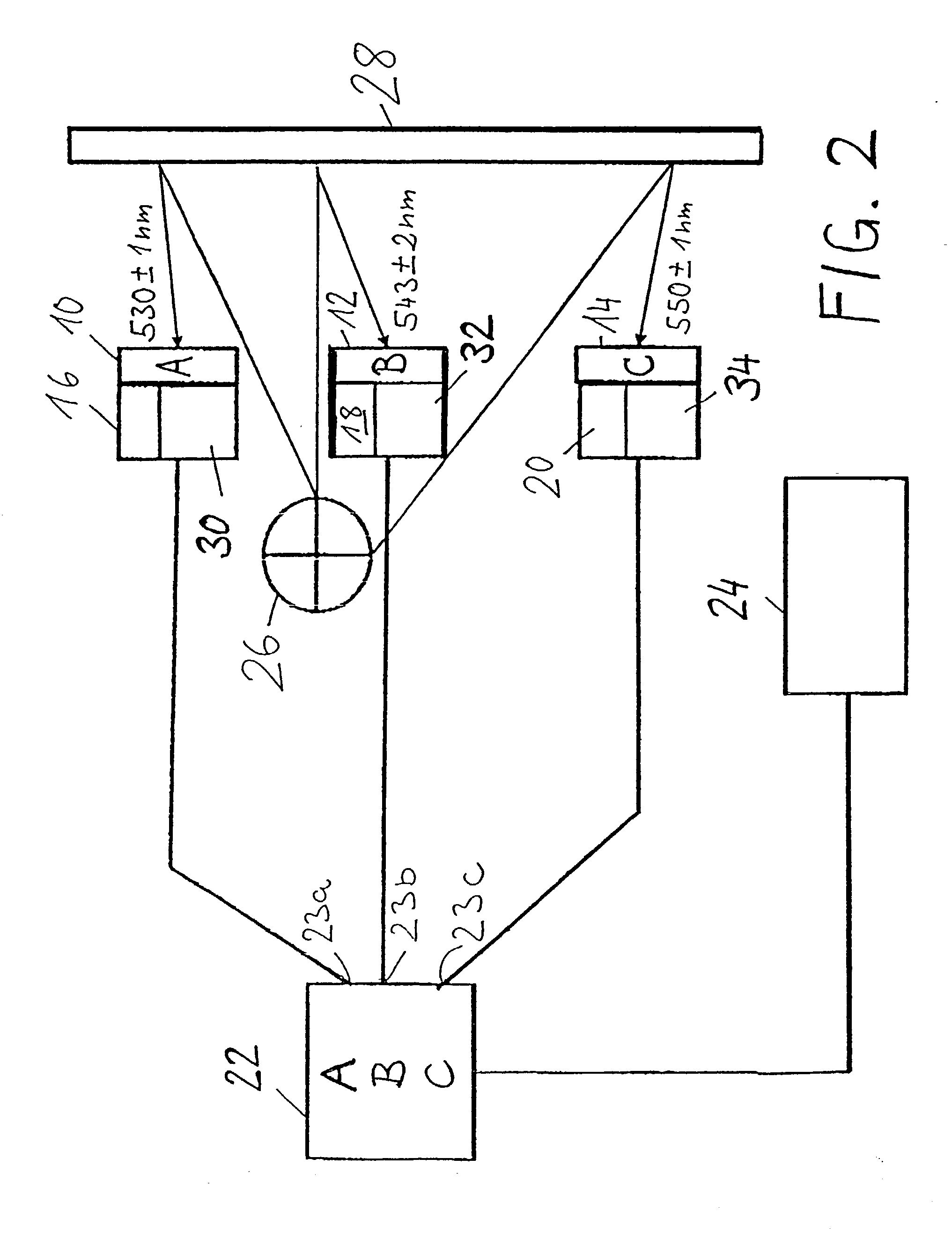Synthesis of nanoparticles
a technology of nanoparticles and nanoparticles, applied in the direction of peroxide/peroxyhydrate/peroxyacid/superoxide/ozonide, optical radiation measurement, etc., can solve the problems of industrial production of final substances, poor yield of particles of a certain (desired) size, and disadvantages, so as to enhance the efficiency of collectors and enhance the sensitivity of commercial detectors.
- Summary
- Abstract
- Description
- Claims
- Application Information
AI Technical Summary
Benefits of technology
Problems solved by technology
Method used
Image
Examples
Embodiment Construction
[0170] The following paragraph gives first a detailed description of a preferred embodiment for a synthesis method of the invention. The example is the preparation of LaPO.sub.4Ce:Dy.
[0171] 1. LaPO.sub.4Ce:Dy
[0172] a) Into a first, 50 ml-containing round-bottom flask with reflux condenser, temperature sensor and heating mantle attached 20 ml of commercially available TOP (90%) are poured and evacuated at approx. 323 Kelvin (K) for one hour with stirring.
[0173] b) In a second flask 2 g of TOPO and 2.3 ml of TOP are mixed and slightly heated until the TOPO is melted and the mixture is homogenous.
[0174] c) In a third flask the salts LaCl.sub.3 (0.001 mol), CeCl.sub.3 (0.0012 mol), and DyCl.sub.3 (0.00024 mol) are dissolved in 3 ml of methanol and subsequently poured into the TOP / TOPO mixture.
[0175] d) Then 0.0028 mol of H.sub.3PO.sub.4 are added to the above-named 50 ml round-bottom flask and stirred under vacuum at 323 Kelvin.
[0176] e) After this, the methanol is removed from the salt...
PUM
| Property | Measurement | Unit |
|---|---|---|
| Fraction | aaaaa | aaaaa |
| Fraction | aaaaa | aaaaa |
| Fraction | aaaaa | aaaaa |
Abstract
Description
Claims
Application Information
 Login to View More
Login to View More - R&D
- Intellectual Property
- Life Sciences
- Materials
- Tech Scout
- Unparalleled Data Quality
- Higher Quality Content
- 60% Fewer Hallucinations
Browse by: Latest US Patents, China's latest patents, Technical Efficacy Thesaurus, Application Domain, Technology Topic, Popular Technical Reports.
© 2025 PatSnap. All rights reserved.Legal|Privacy policy|Modern Slavery Act Transparency Statement|Sitemap|About US| Contact US: help@patsnap.com



